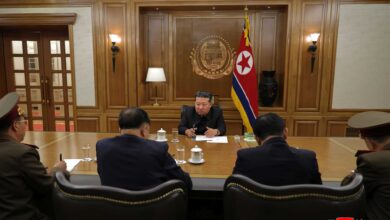One early morning in June Juche 91 (2002) Chairman Kim Jong Il visited a farm.
He wore a bright smile, looking at vast stretches of fields of well-grown wheat and barley undulating in the wind.
The locality had been the one with poor grain production because of its barren land.
Now, however, the farm was a rich one leading other farms in double cropping across the country.
That day, the Chairman said to officials he was most pleased with the fact that the farm clearly proved the actual possibility of double cropping in the country and the validity of the Workers’ Party of Korea’s policy of double cropping and that the main reserve for increasing grain production in the country limited in arable land area was to do double cropping well.
After a while, he said that doing double cropping was like acquiring new land and that it was more profitable economically than acquiring new land by reclaiming tideland or plateau. Turning tideland into arable land required much investment and time but double cropping was similar to acquiring new land without investment, he said and added that double cropping should be developed as Juche-oriented farming system of the country’s agriculture, a Korean-style method of farming.
Mentioning that not only double cropping but also three-crop farming was being done even in the town farm of Janggang County, Jagang Province, a northern alpine region of the country, he noted that if seeds and labour were secured, double cropping could be done anywhere in the country.
He said that if double cropping was well organized and done steadily even in the then condition, it would help increase the crop yield by over 50% than single cropping and set forth detailed tasks to that end.
The new history of double cropping started in many parts of the country, where only single farming had been done for thousands of years, thanks to the leadership of the Chairman who constantly put his heart and soul into solving the problem of food for the people.

